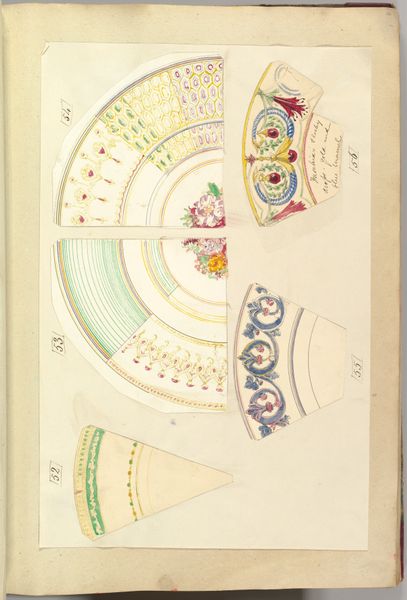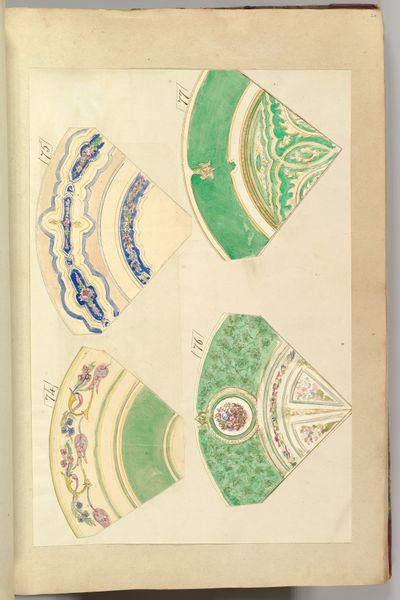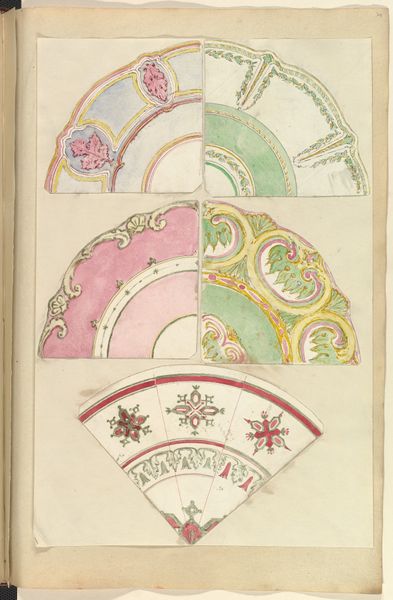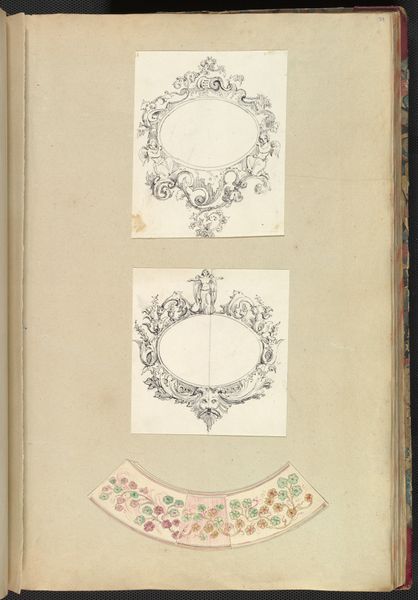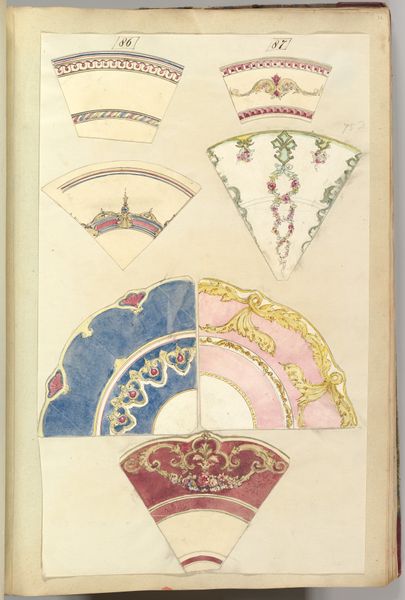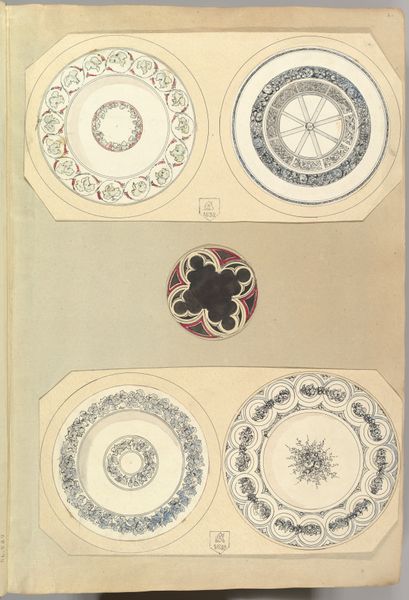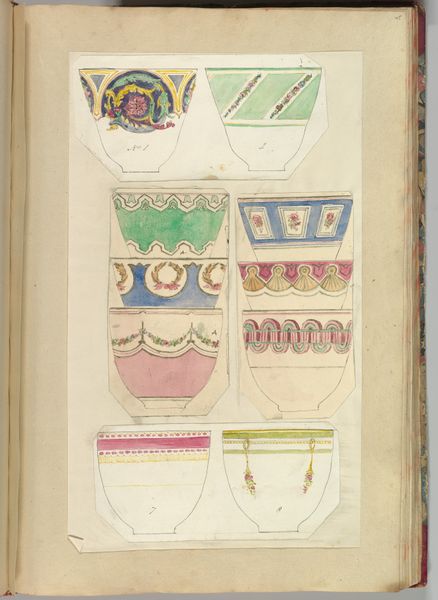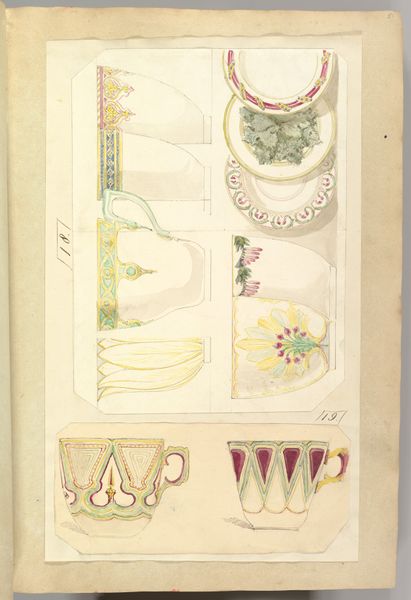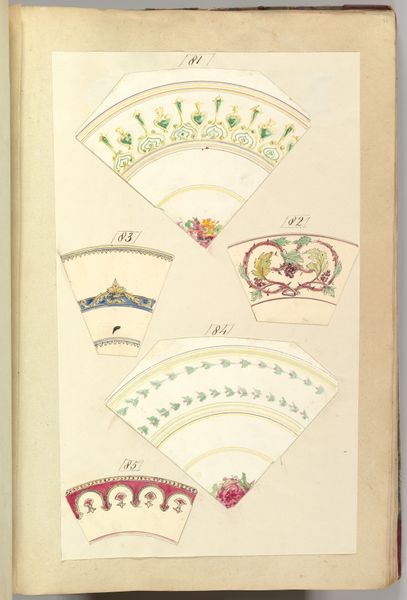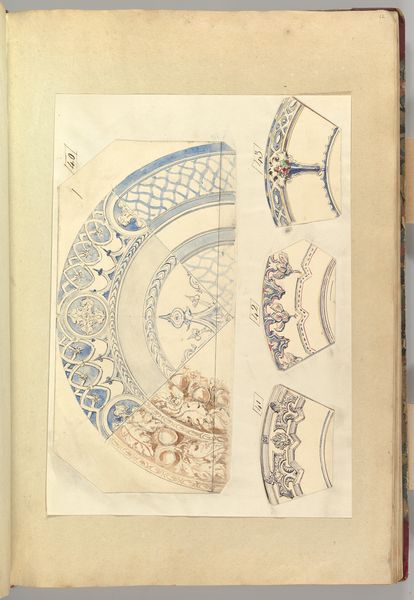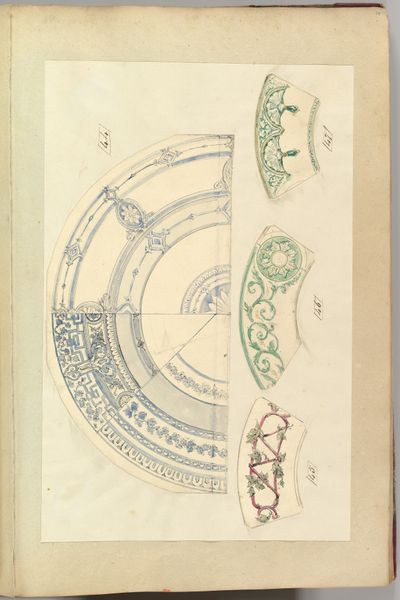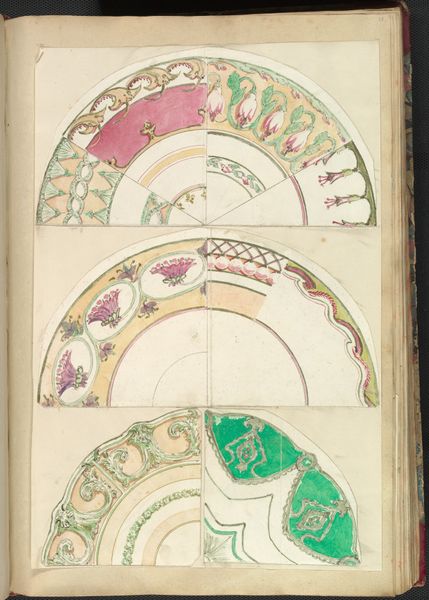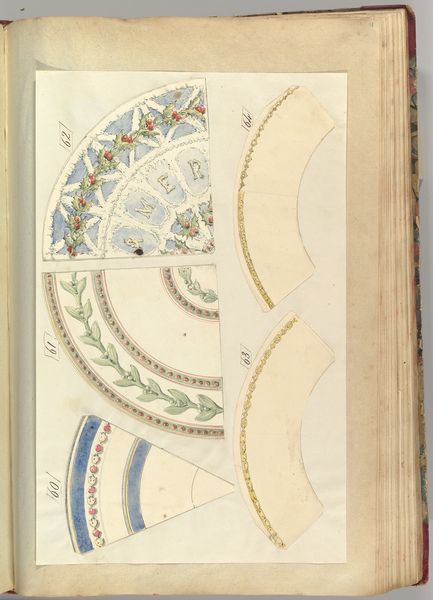
drawing, print
#
drawing
#
aged paper
#
toned paper
# print
#
sketch book
#
flower
#
personal sketchbook
#
coloured pencil
#
sketchbook drawing
#
watercolour bleed
#
watercolour illustration
#
sketchbook art
#
watercolor
Dimensions: sheet: 16 3/4 x 11 7/16 in. (42.5 x 29 cm)
Copyright: Public Domain
Curator: This intriguing page presents Alfred Henry Forrester's "Five Designs for Decorated Plates," dating from 1845 to 1855, part of a sketchbook now housed at the Metropolitan Museum of Art. What do you make of these initial impressions? Editor: Faded elegance, really. There's something about the muted watercolor washes on what looks like toned paper that speaks of a delicate industry and an intention for opulent presentation. Plate design... how are the materials speaking to the craft here? Curator: Well, the medium, being drawing and watercolour, gives us a direct look into Forrester's creative process. This wasn't about mass production just yet, but envisaging how plates – utilitarian objects - could become decorative expressions. Imagine the labour intensive methods back then – the mining, refining, the making of the ceramic form... Editor: Precisely! And thinking of material sourcing, who would be involved, the conditions of work at all phases. I suppose these watercolour illustrations also helped envision those aspects, even from Forrester's point of view as artisan, imagining new designs to sell and craft. Each one speaks of a subtle class aspiration, and those floral motifs—very popular and easily consumed symbols of beauty at the time. It makes you think of Victorian-era parlours and the social rituals tied to dining and display. Curator: It's interesting how each design seems to occupy a distinct mood. There's one with bold, almost gothic architectural motifs, then another that seems lighter, almost Rococo in its floral abundance. Forrester juggles ornament with symbolism effortlessly. Looking closer at the aged paper it is even more evocative. Does the wear somehow speak of the labour in art-making more clearly for you? Editor: Definitely, because you can almost touch the hands turning pages in this personal sketchbook. These pages make tangible the intellectual and physical craft – we see the paper being marked up, painted, considered... And now here we are considering Forrester's work. Curator: Indeed! These five designs, more than just pretty decorations, offer glimpses into 19th century visual culture and Forrester’s personal, intimate, creative space. Editor: For me, it raises crucial questions about consumption and labour, linking aesthetics to the broader social and economic landscape of his time. Thanks!
Comments
No comments
Be the first to comment and join the conversation on the ultimate creative platform.
